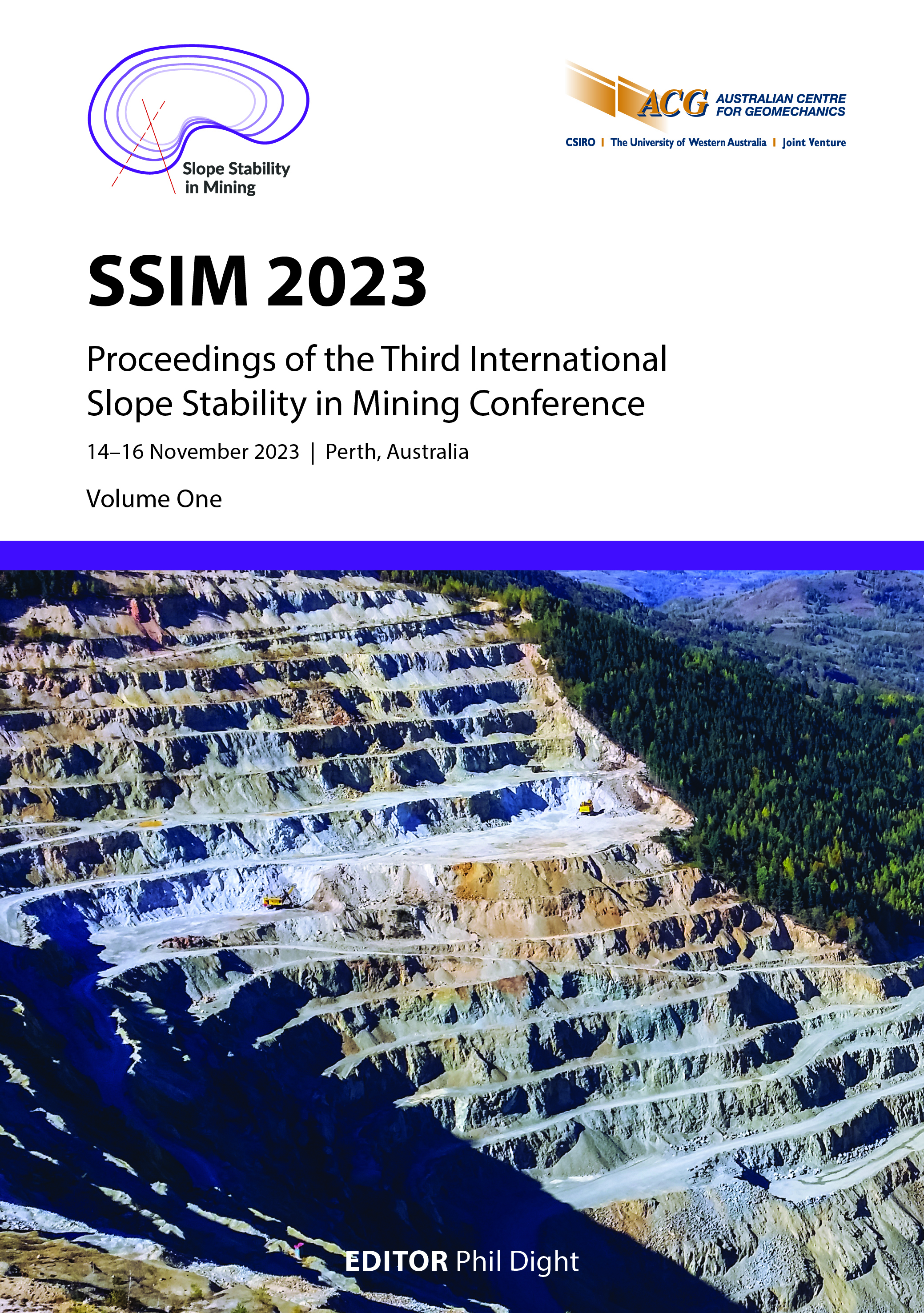Stabilisation of open pit wall movements detected by InSAR using horizontal drains

|
Authors: Ramakrishnan, P; du Toit, J; Scoular, J; Bas Leezenberg, P |
DOI https://doi.org/10.36487/ACG_repo/2335_53
Cite As:
Ramakrishnan, P, du Toit, J, Scoular, J & Bas Leezenberg, P 2023, 'Stabilisation of open pit wall movements detected by InSAR using horizontal drains', in PM Dight (ed.), SSIM 2023: Third International Slope Stability in Mining Conference, Australian Centre for Geomechanics, Perth, pp. 769-782, https://doi.org/10.36487/ACG_repo/2335_53
Abstract:
The M15 west slope of Main Pit at First Quantum Minerals’ Kansanshi copper–gold mine in Zambia is an actively mined eastward-facing wall. This study highlights the early warning provided by a monitoring service based on interferometric synthetic aperture radar (InSAR). Displacements were detected along the slope face, prompting an intervention using horizontal drains. To monitor the west slope of the pit, visual inspections, ground-based radars (GBRs), robotic total stations (RTS) as well as imagery from the radar satellite constellation TerraSAR-X was used. The early warning alert was issued in July 2022 on InSAR displacements estimated using three months of imagery acquired at 11day intervals. Surface movement was detected on several benches with the displacement beginning at the base of the wall and spreading radially and laterally, resulting in a circular subsidence pattern. This was suspected to be a precursor to a failure along the slope face. There was no alert of anomalous displacements from the GBR and RTS. In response to the observed displacements, a mitigation plan was drawn up onsite. It was hypothesised that the movements were due to increased porewater pressure. Using horizontal drains and boreholes, the area was to be dewatered. The depressurisation drilling began in November 2022 and continued until December 2022 when it was observed that the rate of movement had slowed from 15.1 mm per year to 5.9 mm per year before the onset of the wet season. Controlling the risk and prevention of the failure allowed for the smooth and continued operation of the trolley lines that were installed to reduce diesel usage. Furthermore, other costs associated with the failure—an increase in the tramming distance, for example—were successfully avoided. Using InSAR as a monitoring tool, timely intervention was possible, saving time, quantifiable monetary resources, and increasing operational efficiency.
Keywords: slope monitoring and its interpretation, risk management and operational safety, hydrology and blasting
References:
Bieniawski, ZT 1989, Engineering Rock Mass Classifications: A Complete Manual for Engineers and Geologists in Mining, Civil, and Petroleum Engineering, Wiley, Hoboken.
/documents/247904/4819394/Sentinel-1B+In-Flight+Anomaly+Summary+Report.pdf
First Quantum Minerals 2022, Ground Control Management Plan Kansanshi Mine, GCMP 001, unpublished internal company document.
First Quantum Minerals 2022, Rock Engineering, unpublished internal company document.
Gray, D, Lawlor, M, Stone, R 2020, Kansanshi Operations: North West Province, Zambia. NI 43-1010 Technical Report, First Quantum Minerals, Perth.
More O'Ferrall, GC & Simbile, NS 2020, ‘Addressing pit wall instabilities in Africa’s largest open pit copper mine’, in PM Dight (ed.), Slope Stability 2020: Proceedings of the 2020 International Symposium on Slope Stability in Open Pit Mining and Civil Engineering, Australian Centre for Geomechanics, Perth, pp. 1507–1520,
© Copyright 2025, Australian Centre for Geomechanics (ACG), The University of Western Australia. All rights reserved.
View copyright/legal information
Please direct any queries or error reports to repository-acg@uwa.edu.au
View copyright/legal information
Please direct any queries or error reports to repository-acg@uwa.edu.au

